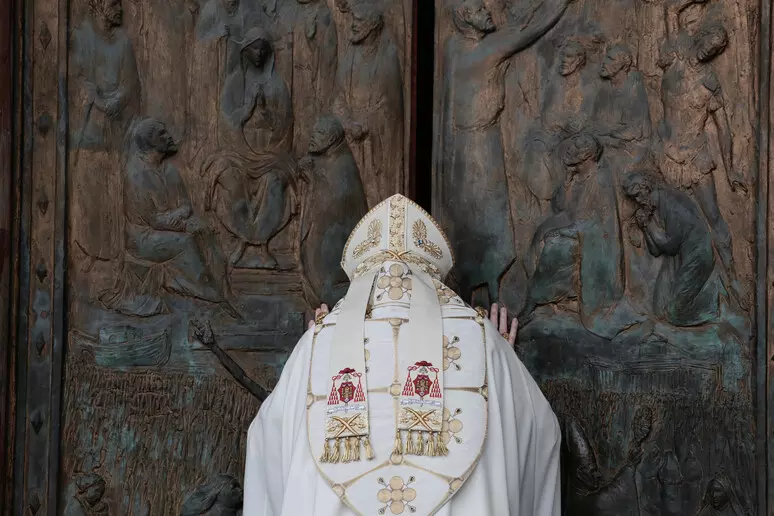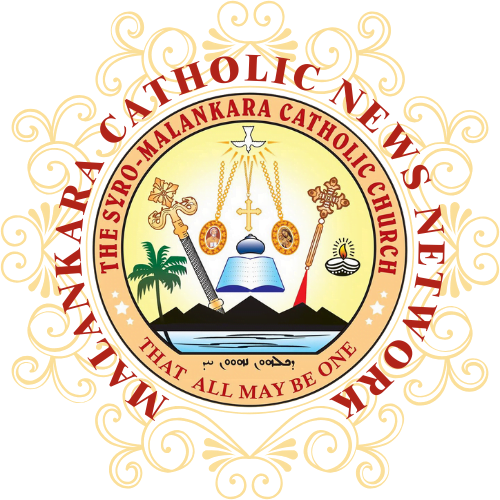On Christmas Eve 2024, St. Peter’s Basilica stood radiant in the embrace of festive lights, but no light was more significant than the glow of hope kindled by Pope Francis as he opened the Holy Door. This deeply symbolic gesture inaugurated the Jubilee of Hope 2025, a year dedicated to spiritual renewal, pilgrimage, and extraordinary grace. The Holy Door, long revered as a threshold of redemption, now stands open, inviting all Catholics to step into a year of transformation, leaving behind sin and embracing the joy of Christ’s saving love.
The Significance of the Holy Doors
The Holy Doors of Rome are not mere entryways but sacred symbols deeply embedded in the Catholic tradition. Found in the four major papal basilicas—St. Peter’s, St. John Lateran, St. Mary Major, and St. Paul Outside the Walls—these doors are opened only during Jubilee Years. To walk through a Holy Door is to undertake a profound act of faith, symbolising the passage from a life burdened by sin to one renewed in God’s grace.
When Pope Francis opened the Holy Door at Rebibbia prison, it was more than an act of inclusion; it was a powerful statement about the universality of God’s mercy. The prison door, usually associated with confinement, was transformed into a gateway of hope, reminding the world that redemption knows no barriers.
The ritual of opening a Holy Door traces its roots to the 15th century, when Pope Martin V first introduced the practice. Over centuries, it has come to represent an extraordinary moment of grace, when Catholics are invited to renew their relationship with God and the Church. The 2025 Jubilee extends this invitation to millions of faithful worldwide, calling on them to embrace this sacred opportunity for transformation.
A Pilgrimage of Hope
The theme of this Jubilee, Pilgrims of Hope, encapsulates the essence of the Catholic journey—an unceasing quest for spiritual renewal. For those able to travel to Rome, the pilgrimage to the Holy Doors is an unparalleled experience. It begins at Piazza Pia near the Vatican and culminates in the crossing of the threshold at St. Peter’s Basilica. Pilgrims are accompanied by the official Jubilee Cross, which adds a communal and symbolic dimension to the journey.
The Vatican has introduced modern tools to facilitate this ancient tradition. Through the official Jubilee portal, individuals and groups can register their pilgrimage, receive a QR-coded Pilgrim Card, and secure a specific date and time to visit the Holy Doors. This streamlined process ensures that the spiritual focus of the pilgrimage remains undisturbed by logistical challenges.
For many, the act of walking through the Holy Door is a tangible representation of their spiritual journey. It is a moment of profound grace, a crossing over from sin to redemption, and a commitment to living as faithful witnesses of Christ.
For Those Who Cannot Travel to Rome
Understanding that not all Catholics can make the journey to Rome, Pope Francis has extended the Jubilee’s blessings to every corner of the globe. Dioceses worldwide have been encouraged to establish local pilgrimage sites where the faithful can participate in the graces of the Jubilee. These sites, often marked by smaller Holy Doors or designated altars, provide opportunities for Catholics to experience the transformative power of this sacred year within their own communities.
Additionally, indulgences—the remission of temporal punishment due to sin—are available to those who fulfill the spiritual conditions of confession, Holy Communion, prayer for the Holy Father’s intentions, and acts of charity. For the homebound, virtual resources provided through the Jubilee portal offer ways to engage with the celebrations, ensuring that no one is excluded from this extraordinary year of grace.
The Year Ahead: Grace and Action
The Jubilee Year is not just a time for introspection but a call to live out the Gospel message in tangible ways. Pope Francis has emphasised that hope is not a passive sentiment but an active virtue. His bull of convocation, Spes Non Confundit (Hope Does Not Disappoint), challenges Catholics to embody hope through acts of charity and justice.
A striking aspect of this Jubilee is its focus on prisoners. Pope Francis has called on governments to implement measures that restore dignity to those in detention, such as amnesty programs and opportunities for reintegration into society. The opening of the Holy Door at Rebibbia prison serves as a poignant reminder of the Church’s mission to be a beacon of hope for all, especially the marginalised.
This Jubilee is also a time to reflect on the broader challenges facing humanity. Pope Francis has urged Catholics to be “sowers of hope,” bringing light to a world often overshadowed by division, poverty, and despair. Through acts of kindness, community service, and advocacy for justice, the faithful are called to make hope a lived reality.
A Journey Through the Holy Doors
1. St. Peter’s Basilica (December 24, 2024):
The Jubilee began with the opening of the Holy Door at St. Peter’s Basilica, the spiritual heart of Catholicism. Pope Francis’ solemn gesture invited pilgrims to embrace Christ as the “door of salvation” and embark on a journey of renewal. By Christmas Day, over 35,000 pilgrims had passed through the Holy Door, each one taking a step closer to God’s grace.
2. Rebibbia Prison (December 26, 2024):
In an unprecedented move, Pope Francis opened a Holy Door at Rome’s Rebibbia prison. This act symbolised the Church’s commitment to extending God’s mercy to all, especially those often forgotten by society. It was a moment of profound inclusivity, reminding us that hope is for everyone.
3. St. John Lateran (December 29, 2024):
The mother church of all Catholics, St. John Lateran, opened its Holy Door in a ceremony that highlighted the unity and universality of the Church. As the cathedral of the Bishop of Rome, it holds a special place in the Jubilee celebrations.
4. St. Mary Major (January 1, 2025):
On the feast of Mary, Mother of God, the Holy Door of St. Mary Major was opened. This basilica, dedicated to the Blessed Virgin, calls the faithful to seek her intercession as they journey through the Jubilee Year.
5. St. Paul Outside the Walls (January 5, 2025):
The final Holy Door, known as the “Door of Hope,” was opened at this basilica built over the tomb of St. Paul. Cardinal James Michael Harvey reminded pilgrims that hope is not a vague desire but a certainty rooted in God’s promises.
What Catholics Should Do
During this Jubilee Year, Catholics are encouraged to:
- Make a Pilgrimage: Whether to Rome or a local site, undertake a journey of faith to experience the transformative grace of the Holy Doors.
- Receive a Plenary Indulgence: Fulfill the spiritual conditions of confession, Holy Communion, and prayer for the Holy Father’s intentions, along with acts of charity.
- Engage in Works of Charity: Extend God’s love through acts of kindness and service, bringing hope to those in need.
- Deepen Your Faith: Participate in liturgies, catechesis, and spiritual exercises to grow closer to Christ.
A Call to Radiate Hope
Pope Francis has described hope as a theological virtue infused by God, a certainty rooted in His fidelity. This Jubilee invites us not only to receive hope but to become its ambassadors. As the Pope eloquently stated, “To hope is to live differently. To radiate hope is the Church’s greatest gift to humanity.”
The Holy Doors, whether in Rome or in our local parishes, remind us of the boundless mercy of God and the transformative power of faith. As we walk through them, let us commit to a life of grace, embodying the hope that is the hallmark of this sacred year.
The Jubilee of Hope 2025 is not just an event—it is a journey of renewal, a call to action, and a testament to the enduring promise of God’s love. Let us embrace this holy time with open hearts and a steadfast spirit, united as pilgrims of hope.


